Today is April 19, 2025. Probably that doesn’t mean anything to you, unless you’re a U.S. history geek, or unless you grew up in Concord or Lexington, Massachusetts. But today is the 250th anniversary of the Battle of Lexington and Concord.
While both the town of Concord and the town of Lexington have annual celebrations, with parades and reenactments, this year they both arranged special celebrations for the 250th anniversary. Fifty years ago, on April 19, 1975, I was in the parade in Concord, marching with my Boy Scout troop. Since I’m pretty sure I won’t be around for the 300th anniversary, I decided that I really had to attend this year’s celebration.
I wanted to watch the reenactment of the battle at the North Bridge, and I knew just where I wanted to stand — in the formal garden at the visitor center of Minuteman National Historical Park. From there you have a panoramic view of the North Bridge and the road down which the Minutemen and militia companies marched to confront His Majesty’s troops.
I should have read the information about the day more carefully. There was no reenactment this year. I was a bit disappointed. Still, I had a marvelous view of the crowds that gathered to watch the ceremonies, and the main events of the ceremonies themselves — the Concord Minutemen firing a salute from the bridge, and the 21 gun salute from a field on the other side of the river.
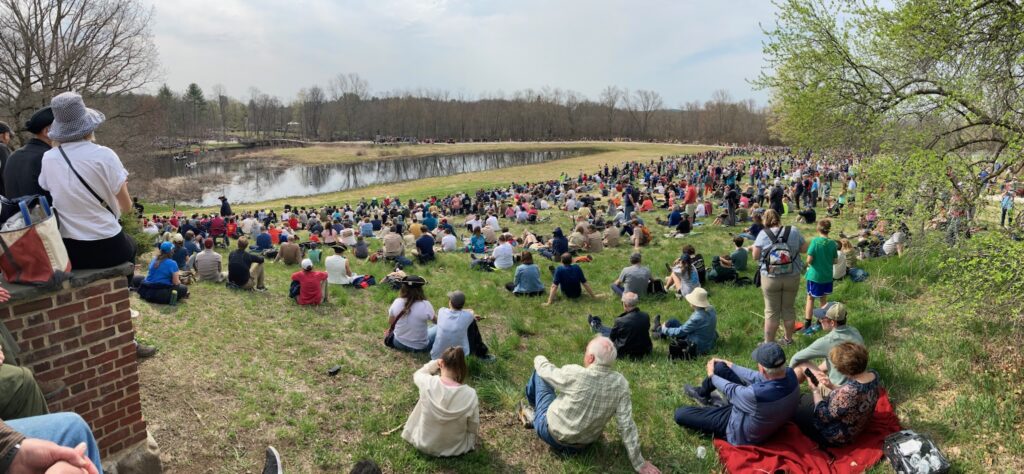
The crowd looked a little thin to me; there were not nearly as many people as I had expected. While we were waiting for the ceremonies to begin, I wound up talking with the people on either side of me. To my left was a man from Albany, N.Y., who had attended the reenactment of Paul Revere’s arrival in lexington the night before, spent the night in his car, watched the reenactment of the Battle of Lexington at sunrise, then taken the shuttle to Concord. On the other side of me were a couple who live in Concord, who were kind of interested in the 18th century historical garb that several of the parade units wore; I was able to tell them where they could obtain 18th C. garb, but warned them that it could be expensive.
Congresswoman Lori Trahan and Massachusetts Governor Maura Healey were the only two state or national politicians to show up. Both of them gave good brief speeches, both of which emphasized how important resisting tyranny was in 1775, and still is today. I thought it was a little disrespectful that neither of our U.S. Senators managed to put in an appearance. I’m not surprised that President Donald Trump didn’t show up — though President Gerald Ford showed up in 1975 — but then Trump is not especially patriotic, and has a fairly weak understanding of U.S. history. It’s probably just as well that Trump didn’t show up, because he wouldn’t have been happy with the remarks made by Healey or Trahan, nor with the signs carried by some of the spectators.
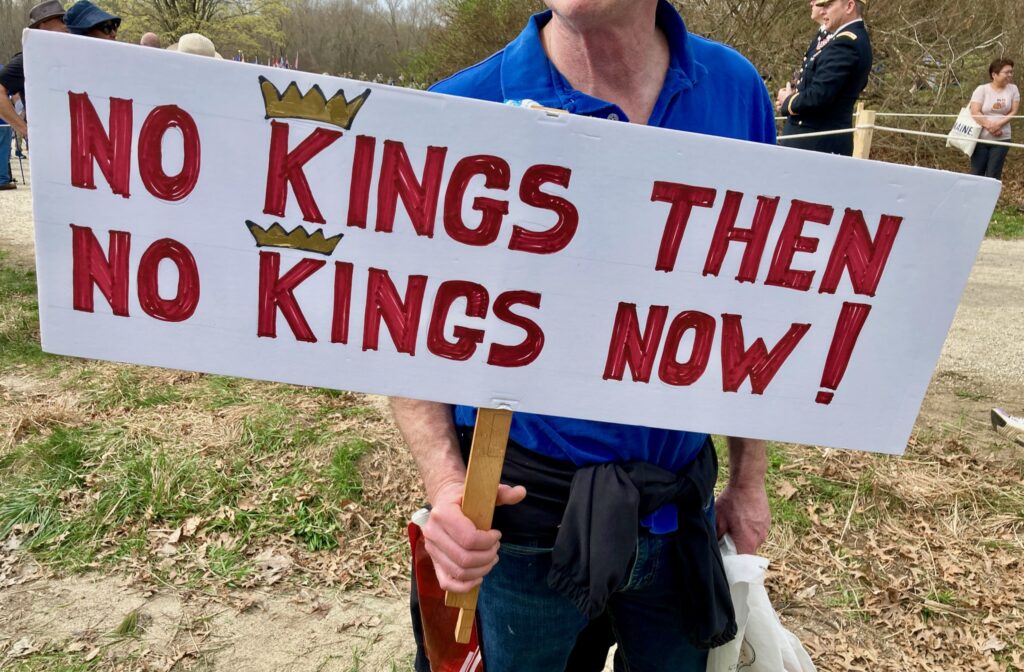
Most of the signs that I saw opposed the tyranny of kings. We didn’t want King George in 1775, and we don’t want a king now.
After the ceremonies at the North Bridge concluded, I made my way to the center of town, so I could watch the parade. On my way there, I saw more homemade signs opposing the tyranny of kings. Most of the slogans I’ve seen opposing the Trump administration have been variations on “Hands Off.” I much prefer variations on the “No Kings” slogan, because it gets to the root of what bugs me about the Trump administration — that he’s acting like a king, and all his supporters are OK with that. But we fought the Revolution to get rid of kings — we don’t want any more kings, not now, not ever.
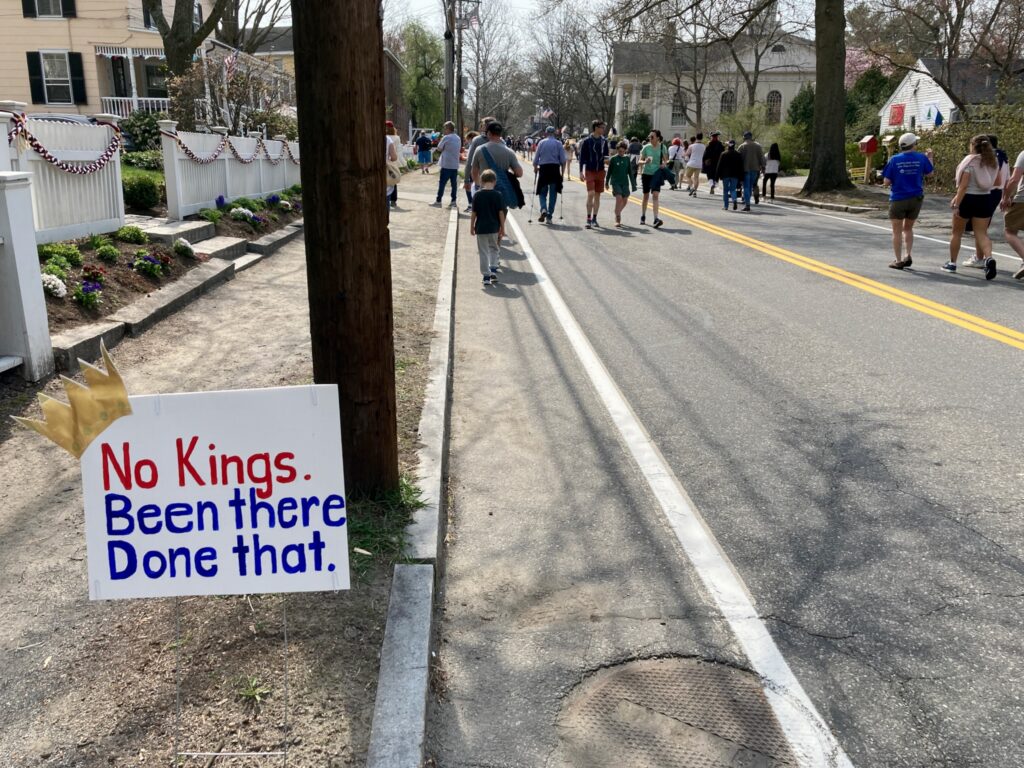
This year, the reviewing stand for the parade was set up in Monument Square, right in front of Town Hall. The units that put on performances — the fife and drum corps, the bands — always put on a show in front of the reviewing stand. It was crowded there. I moved down the street and stood in front of First Parish of Concord, the Unitarian Universalist church in town (the church the Minutemen belonged to). It was still pretty crowded there, but at least I could see the parade.
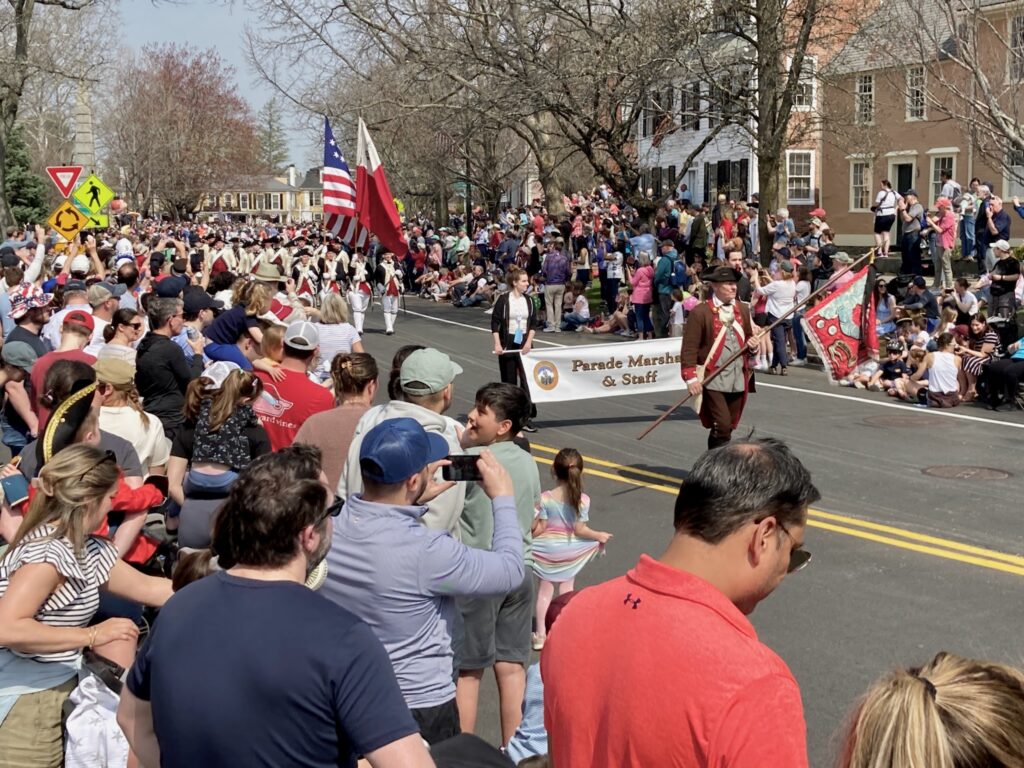
Ever since COVID, I’m not a big fan of crowds. So I walked further along the parade route to where there weren’t that many people.
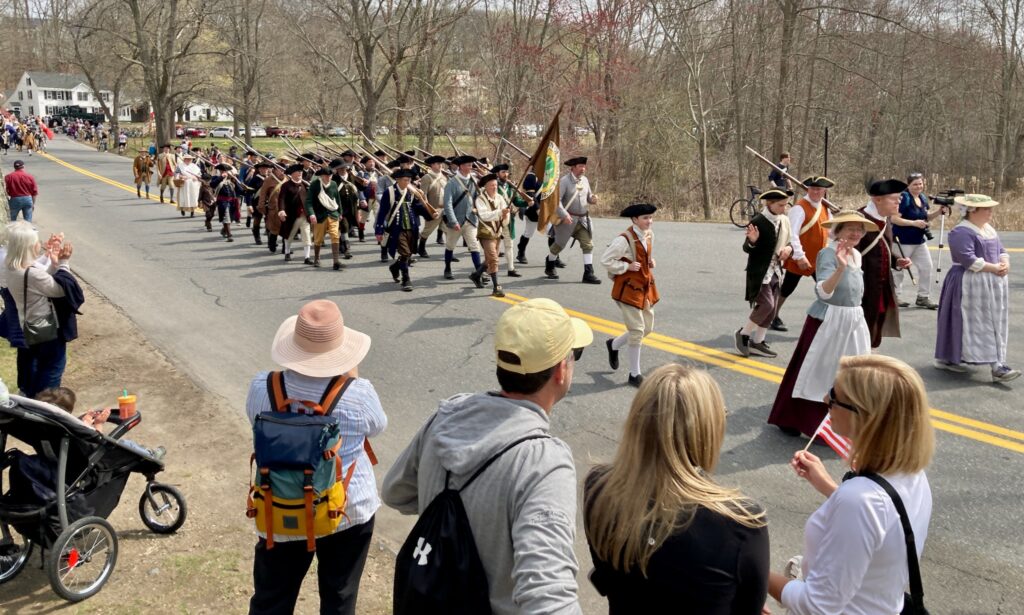
One of the flag-bearers from one of the Minuteman units was carrying a sign stating his opposition to kings. While this was not historically accurate, it seemed very much in keeping with the sentiments the 18th century Minutemen would have held.
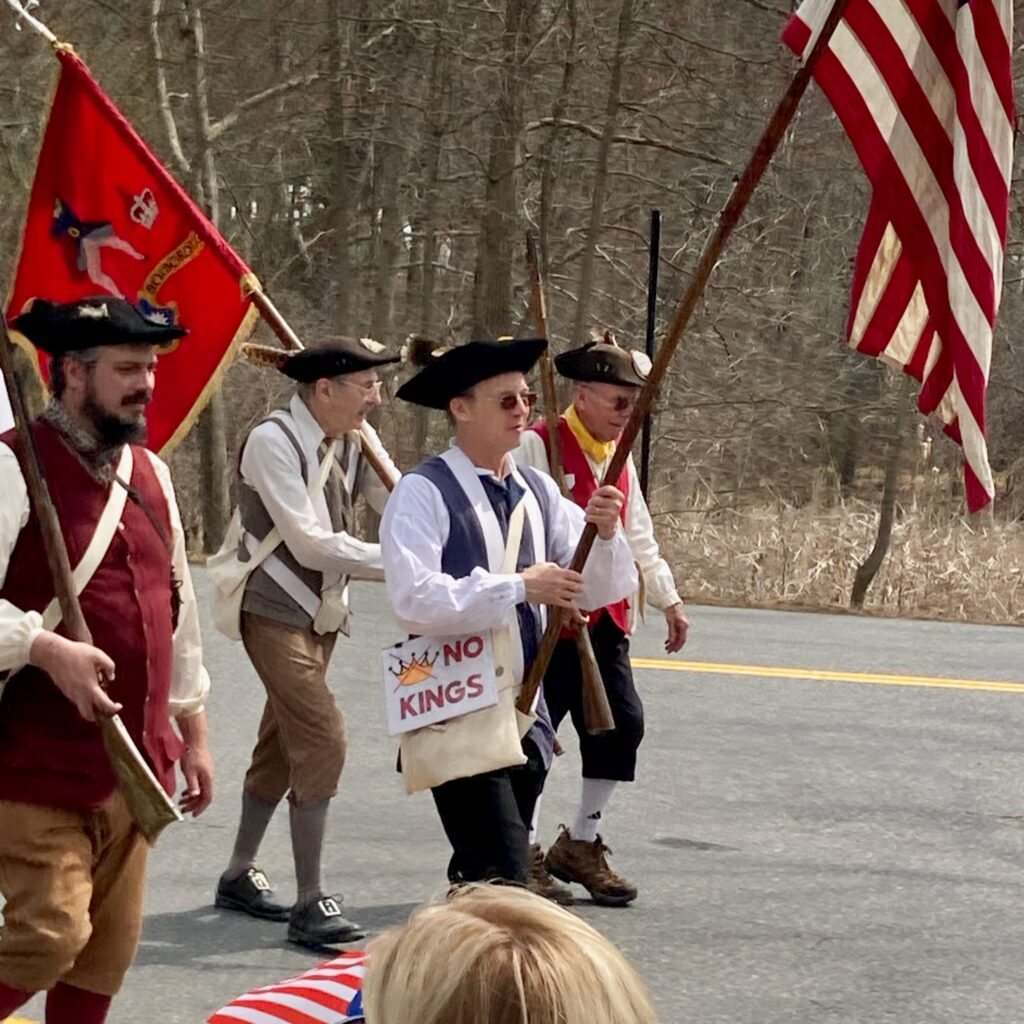
Again, it’s a good thing Trump the wanna-be-king didn’t come. Popular sentiment was definitely against him. It would have been as if King George showed up in Massachusetts in 1775. Massachusetts then and now is one of the leaders against tyranny. While there were Massachusetts Tories in 1775, and while there are Massachusetts Trump-ites in 2025, in both eras the majority of Massachusetts residents were and are Patriots who don’t want kings lording it over them.
Speaking of Patriots, I was also pleased to see the Town of Concord Diversity, Equity, and Inclusion Commission marching in the parade. They carried a banner that read, “Building a Welcoming Community.” I’m old enough to remember the mini-race riot that took place at Concord Carlisle High School on the last day of school in 1978 (I was a senior that year, so I had already graduated and didn’t see the riot myself, but I heard about it). I’d like to pretend that we solved all those race problems and that now everything is hunky-dory, but I guess I have a grimmer view of human nature than that. Human beings find it way too easy to hate one another, so we actually do need organizations that keep us from hating on other people.
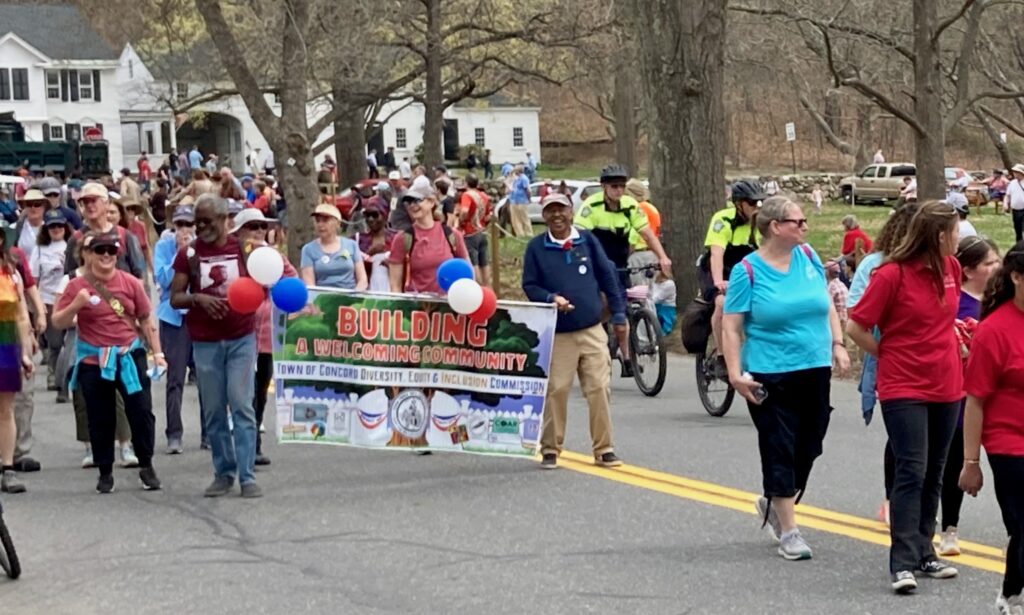
One last photo — this was one of my favorite units in the parade, the Assabet Village Minutemen. This unit is from Maynard, Mass., which wasn’t a separate town in 1775, it was a village known as Assabet Village. I like that they’re not wearing a uniform, which seems more historically accurate. I like that a couple of the men are wearing knit caps, not the stereotypical tricorn hat — again, this diversity of headgear seems more historically accurate. The Minutemen and militia of 1775 were ordinary citizens; they were not yet a trained army — and I like that the Assabet Village Minutemen capture this important aspect of the Battle of Concord.
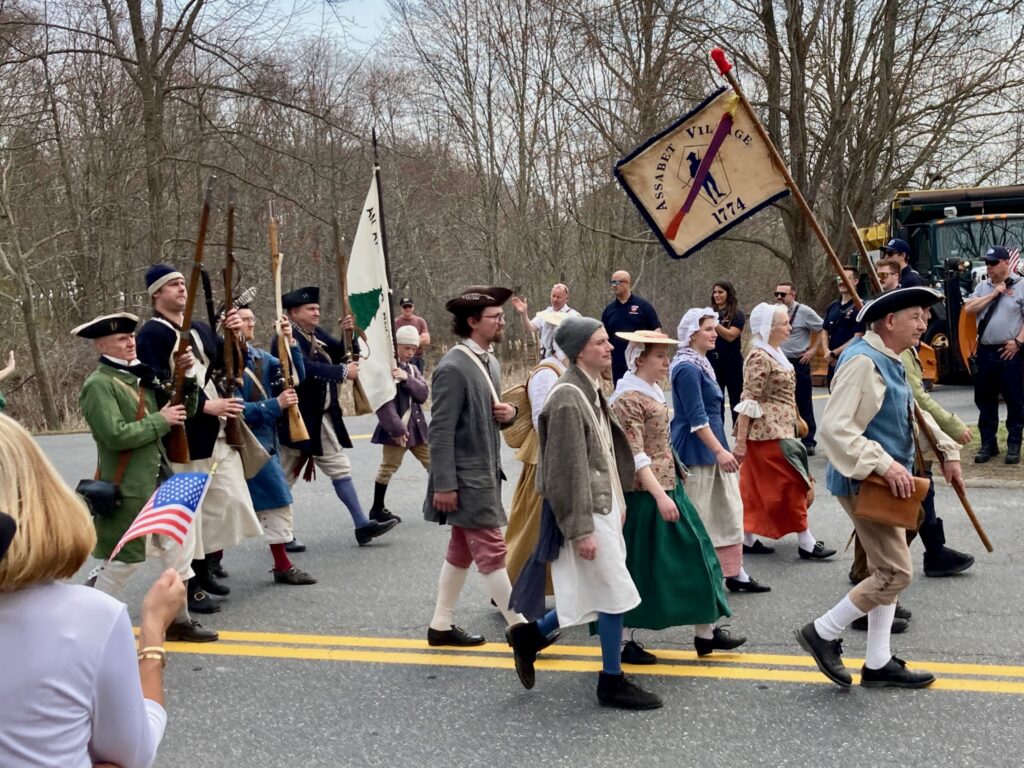
It makes me want to go out and buy myself a suit of 18th century clothing. Not that I can afford it, but it’s fun to think about.

